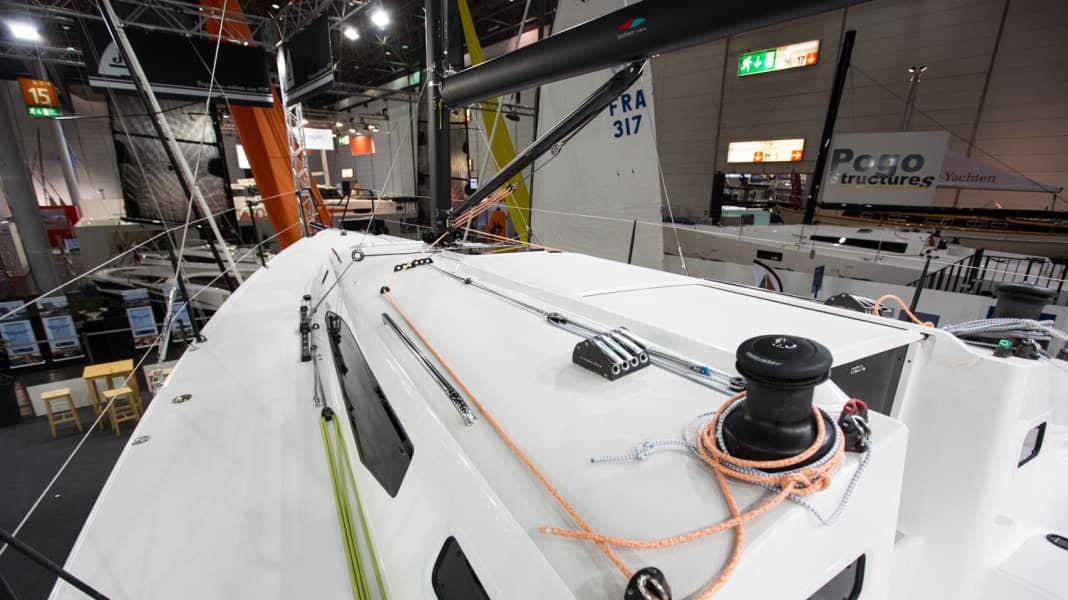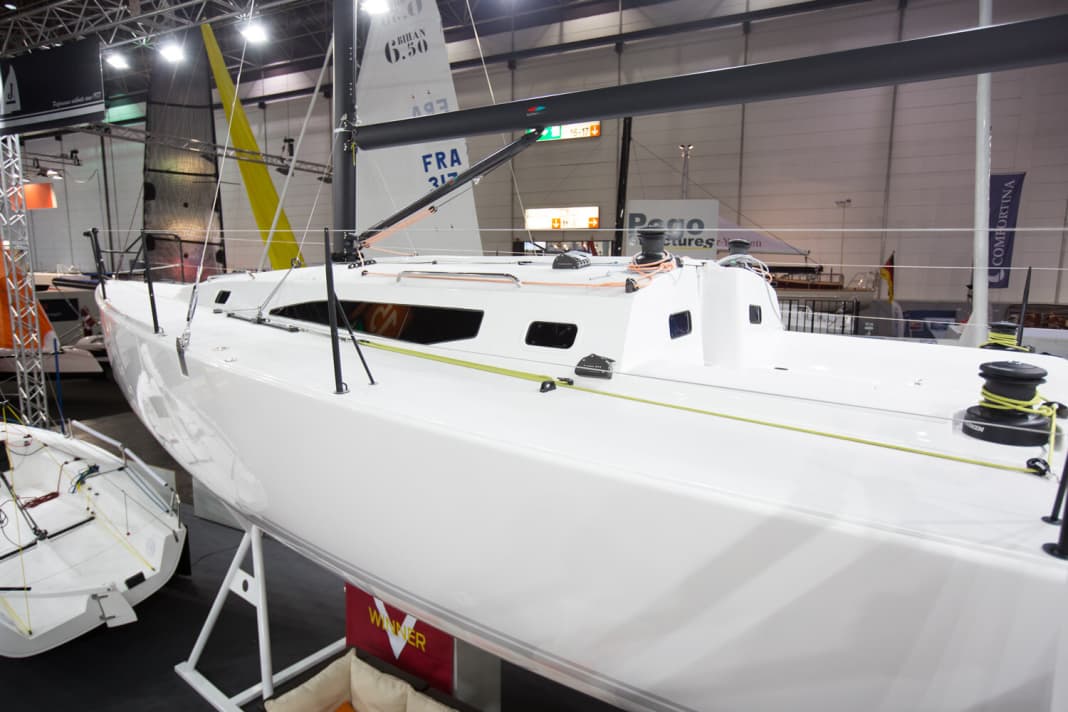Boot Düsseldorf 2018: Premiere III: J/Boats 121 - athletes for small crews
Jochen Rieker
· 21.01.2018

The market for regatta-capable, exciting sailing yachts is undergoing major changes. J/Boats, one of the most high-profile brands in the performance boat and racer/cruiser sector, has also recognised this. Their latest model, the J/121, is optimised for operation with a small crew and is also designed to be fun on long-distance trips, i.e. beyond the classic triangular courses and up-and-downs.
However, anyone expecting radical lines will be surprised. At first and second glance, the J/121 looks like its sporty sisters, such as the J/111: no chines, no delta-shaped hull with a maximally wide and flat stern, no twin rudders. For all its taut elegance, it looks almost disturbingly normal.
When asked about the almost complete absence of today's standard design features, shipyard boss Jeff Johnstone told YACHT online in Düsseldorf: "We have considered all of this. We have also seriously discussed foils and tilt keels. But we believe we have found the best balance between performance, functionality and cost with the current package."






Typical for a J, the 121 should perform well on all courses to the wind. This is why the length-to-width ratio remained relatively moderate. It is hardly any different from the J/125, which promises good upwind characteristics that the boat has already proven in tests in the USA.
To compensate for the lack of width and therefore dimensional stability, the J/121 has a very deep keel of 2.36 metres with a lead bomb and - and this is a first - ballast tanks on both sides. They hold 400 litres each and replace four to five crew members on the high edge - with the advantage of being able to get rid of the extra weight within two minutes in light winds.
The system is controlled by three Dyneema lines that operate valves on the bottom of the hull. A powerful pump pushes the water into the pipe system. The water can be diverted from one side to the other by gravity or with pump assistance. "This takes about 45 seconds, so it hardly takes longer than a tack or jibe," says Jeff Johnstone.
The tanks only noticeably affect the interior in the aft compartment. They are laminated to the side of the ship's side, slightly aft of the companionway. They have large inspection windows. The supply and discharge lines are installed in the technical duct behind the built-in engine. Tank management via lines may seem somewhat improvised, but it is actually a simple, durable and easy-to-maintain solution that offers the major advantage that nobody has to go below deck to operate it.
The interior otherwise appears minimalist, but still offers everything you need for sailing and touring - just not with the usual refinement. For example, the laminate of the coachroof has only been lightly sanded and coated with topcoat to avoid the additional weight of inner shells or panelling. Sandwich panels have replaced heavy plywood on the bulkheads and furniture foundations. In the galley and navigation system, exposed carbon fibre provides a contrast to the few solid wood parts below deck.
At 5.85 tonnes, the J 121 is quite light. By comparison, a Pogo 12.50 displaces not much less at 5.5 tonnes. This and the generous sails create a lot of potential. At just under 5.4 tonnes, the sail carrying capacity of the offshore speedster is clearly in the sporty range.
The sail plan of the otherwise independent J/121 is in line with current trends. Furling headsails simplify adaptation to changing wind conditions or courses. A stay jib can be fitted behind the anchor locker; the fitting for this is part of the standard specification. Code Zero and gennaker are attached to the extendable carbon fibre bowsprit. The new model has also arrived in the modern age when it comes to deck hardware - 3D lifting points for the headsails allow for faster fine adjustment, while attractive rope splices and thimbles replace some of the solid fittings.
The J/121 currently costs 368,900 euros in the standard configuration, without sails and electronics. This does not appear to be an obstacle to its rapid spread. Barely presented, 16 boats have already been sold - a very respectable debut for an ocean-going speedster of this design and price range.
Further information and first sailing photos can be found on the Homepage of J/Boats
Note: In an earlier version of this article, the weight of the J 122 was given, not that of the J 121. We apologise for this confusion!

